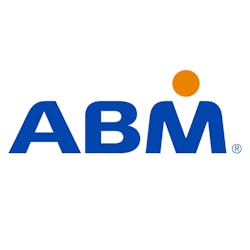Demand is quickly increasing for public transit electrification. Companies that maintain their own fleets are already adopting zero-emissions options. And with federal and state legislation and incentives in place that aim to reduce the use of fossil fuels, the U.S. is on the precipice of a massive transformation—especially in the transportation industry.
All those EVs will obviously require charging—but implementing the appropriate infrastructure for doing so at your facility isn’t always easy, or as obvious. Let’s dive into the reasons why shifting to electric fleet implementations at your facilities is a smart business decision and how you can navigate obstacles while moving toward a healthier, greener, cleaner future.
With EV Benefits This Electrifying, They’re Hard to Ignore Anymore
While some business owners may still be skeptical of them, EVs can fulfill many daily driving needs —including light-duty, medium-duty, heavy-duty and even off-road applications—making them a great solution for fleets. Plus, modern EVs even boast added features that conventional vehicles just can’t keep up with.
According to the U.S. Department of Energy, some of the primary advantages of EV fleets are:
- Reduced total cost of ownership (TCO)
- Greater operational efficiency
- Less maintenance required
- Enhanced performance features
- Equal safety ratings as gas-powered vehicles
- Flexible and varied refueling options
- Lowered and even eliminated emissions
Furthermore, many states are planning to implement new mandates for the use of Zero Emissions Vehicles (ZEV) in the near future. Companies that start their transitions to all-electric fleets now can take advantage of rebates and incentives that will no longer be available once the mandates are in place.
How to Right-Size an EV Charging Deployment for Your Facility (and Avoid Others’ Miscalculations)
Making the switch to an all-electric fleet isn’t always straightforward, especially when it comes to engaging utilities and deploying depot charging. Company leaders can learn from those who have already successfully completed their EV implementations—and have come out better for it. For example, one of the main mistakes that companies often make is creating fewer electrified parking spots than they’ll need to meet future charging demands.
“If you’re tearing up a parking lot to run conduit for one charging station, you might as well future-proof your facility by installing more now to avoid having to do it again—and to get as many of the rebates currently available as possible.”
– Barry Carr, Director of Business Development, ABM
Other common missteps that companies make with their EV fleet implementations include:
- Relying on public charging, which removes operator control over the type, quality and availability of charging ports
- Failing to enact change management processes, which includes EV charger software and properly educating and training their employees on it
- Not future-proofing your parking spaces, which requires running additional conduit and upgrading electric supply for future EV charging needs
So, how much EV growth do you need to account for? Carr recommends that “most building owners should electrify as much as 40% of their parking spaces.”
Connecting All the Dots (and Wires): Successful Collaboration and Implementation
Companies that have successfully transitioned to an all-electric fleet have incorporated some important best practices when installing their charging infrastructure, such as using a flexible, data-driven planning approach. This strategy enables business and facility leaders to choose the right electric fleet vehicles, install EV charging stations at strategic locations and project and prepare for future charging needs. Fleet managers should also require vehicle providers to verify that their EVs are compatible with the chargers they plan to install.
Successful organizations have also considered the importance of centralized “behind the fence” facilities for charging, as opposed to truck stops or convenience stores located within alternative fuel corridors (AFCs). While this approach may initially limit the distance that fleets can travel, the benefits of having control over the charging infrastructure outweigh that disadvantage. One such benefit, according to a recent Yahoo! Finance article, is flexibility, as “flexible infrastructure not only allows an operation to scale easily, but it also allows the system to be retrofitted to accommodate the evolving needs of the fleet.”
Successful implementations have also relied on collaboration between businesses and ESG-focused organizations like the U.S. Department of Energy’s Clean Cities Program, as well as industry groups such as the National Association of Fleet Administrators. Carr recommends that company planners also reach out to their local electric utility for input and advice.
The Power of Getting the Best Possible EV Charging Solution
Transitioning to a cleaner, more cost-effective fleet refueling program, and creating the infrastructure needed to support it, requires expertise and proven dedication.
With a decade of EV experience and nearly 30,000 charging ports installed, ABM is the leading commercial installer of EV in the country. ABM helps guide customers to the best possible solutions for their EV fleets, provide reliable ongoing support and deliver the right financing options— all to help you power up the return on investment (ROI) of EVs for your facilities and stay ahead of the electric wave.
In addition to being beneficial to the planet, fleet electrification lowers operating costs, delivers greater energy efficiency and enables you to take advantage of the latest technologies. Trust our EV experts to build the custom, scalable, future-proof EV infrastructure plan for your fleet and facility.
About ABM
ABM is one of the world’s largest providers of facility services and solutions. A driving force for a cleaner, healthier and more sustainable world, ABM provides essential services and forward-looking performance solutions that improve the spaces and places that matter most. From curbside to rooftop, ABM’s comprehensive services include janitorial, engineering, parking, electrical and lighting, energy and electric vehicle charging infrastructure, HVAC and mechanical, landscape and turf and mission critical solutions. ABM serves a wide range of industries—from commercial office buildings to universities, airports, hospitals, data centers, manufacturing plants and distribution centers, entertainment venues and more. Founded in 1909, ABM serves over 20,000 clients, with annualized revenue approaching $8 billion and more than 100,000 team members in 350+ offices throughout the United States, United Kingdom, Republic of Ireland and other international locations. For more information, visit www.abm.com.
Sponsored by:




